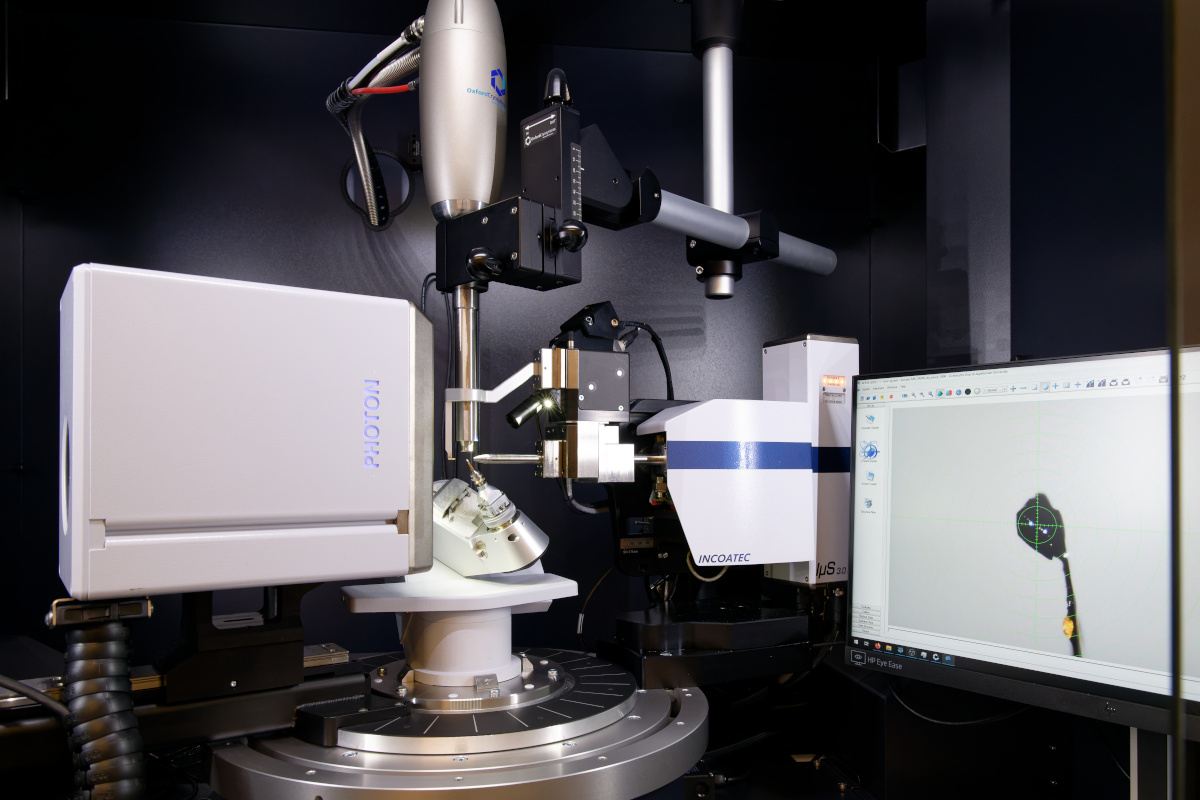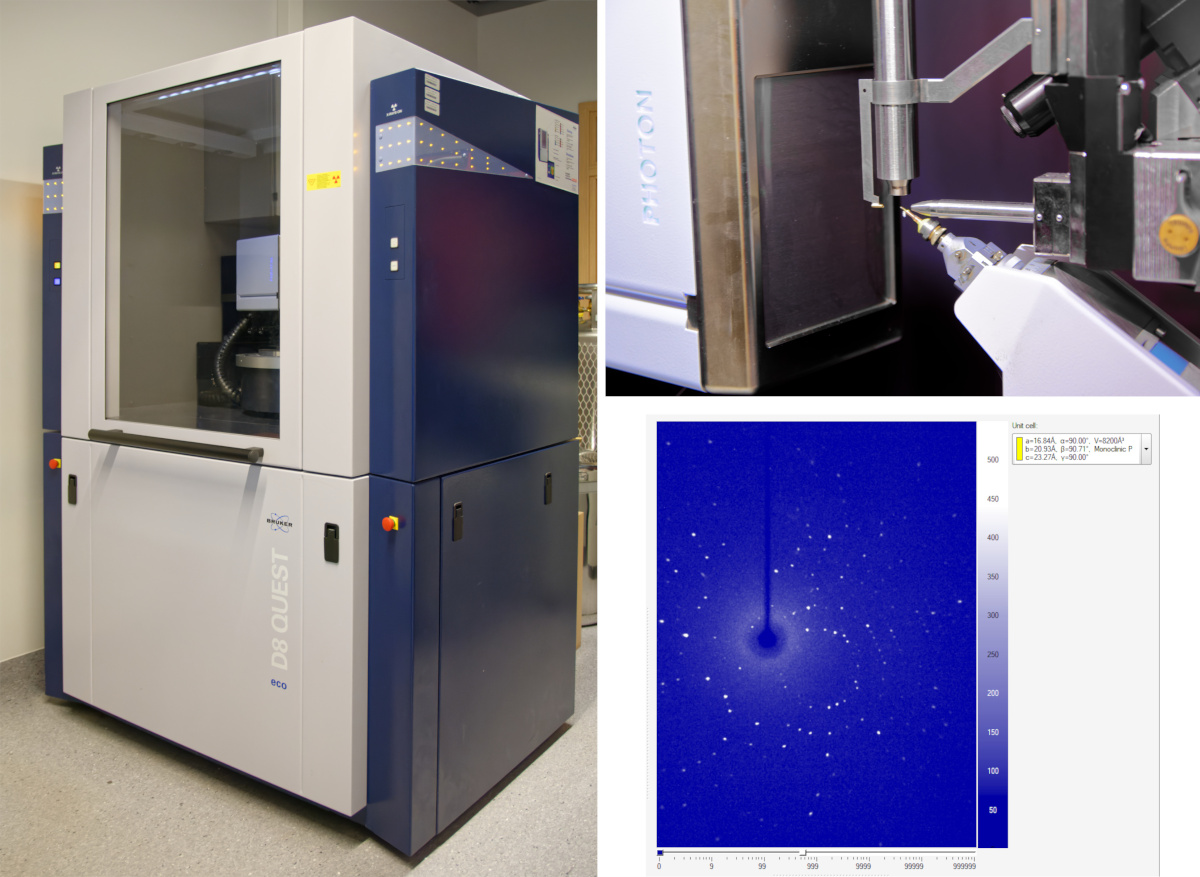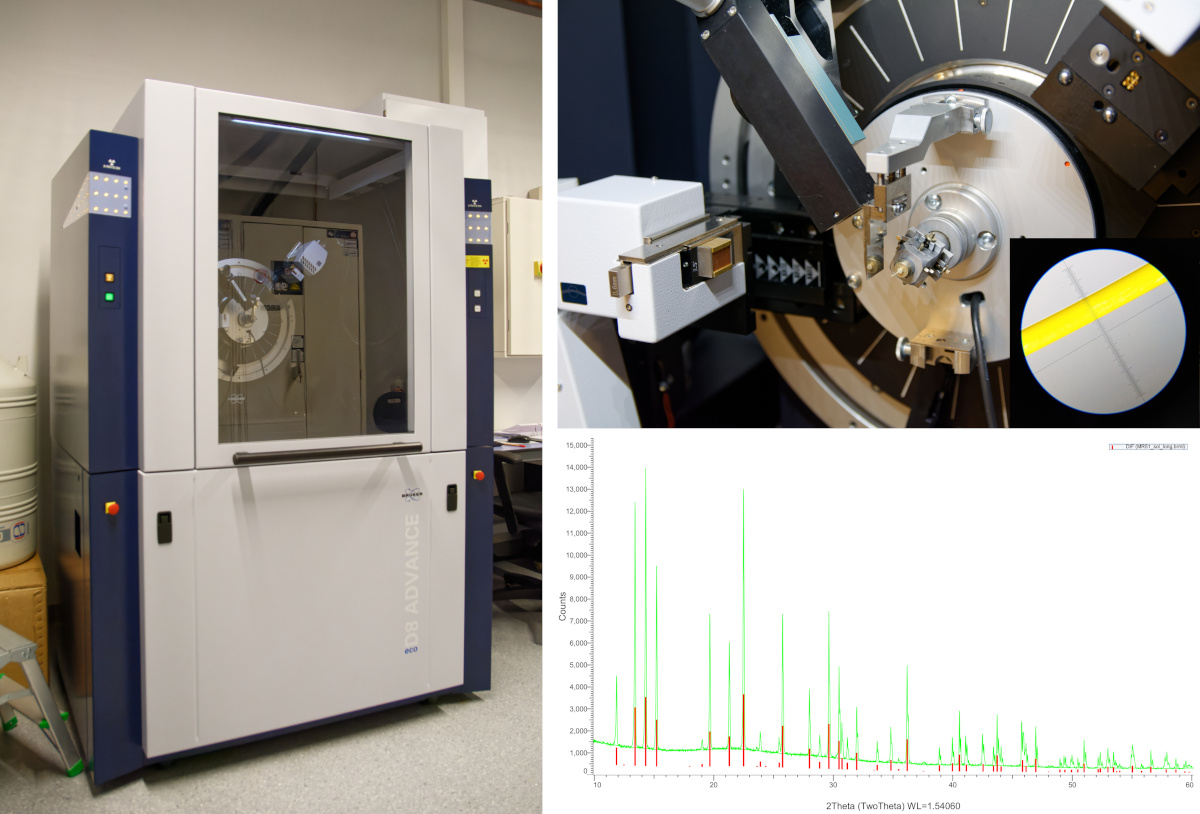
Bruker D8 VENTURE single-crystal X-ray diffractometer with kappa-goniometer is the state of the art tool for advanced structural analysis. The diffractometer is equipped with a micro-focus IµS 3.0 (Mo Kα) source and a very sensitive PHOTON III detector based on the method of counting single X-ray photons. The device is equipped with a CryoStream 800 Plus (Oxford Cryosystems) temperature controller, which allows diffraction studies to be performed in the temperature range from 100 K to 500 K.
The diffractometer was purchased as part of the ATOMIN 2.0 project - Centrum badań materiałowych w skali ATOMowej dla INnowacyjnej gospodarki.
Kontakt:
dr hab. Dawid Pinkowicz, prof. UJ (dawid.pinkowicz@uj.edu.pl),
dr hab. Szymon Chorąży (simon.chorazy@uj.edu.pl),
dr Mateusz Reczyński (mateusz.reczynski@uj.edu.pl)

Bruker D8 Quest ECO single-crystal X-ray diffractometer for single-crystals structure determination. The diffractometer is equipped with a MoKα radiation source, a curved TRIUMPH focusing monochromator, and a highly sensitive CPAD Photon II detector. Moreover, the diffractometer is coupled with a CryoStream 800 Plus (Oxford Cryosystems) temperature controller, which allows to record diffraction data in the temperature range of 100-500 K.
Contact:
dr. habil. Dawid Pinkowicz, prof. UJ (dawid.pinkowicz@uj.edu.pl),
dr. habil. Szymon Chorąży (simon.chorazy@uj.edu.pl),
dr. Mateusz Reczyński (mateusz.reczynski@uj.edu.pl)

Bruker D8 Advance ECO powder X-ray diffractometer for structure determination and phase-analysis of powder samples. The diffractometer is equipped with a Cu Kα radiation source. The diffraction data can be collected for samples sealed in spinning glass capillaries (transmission mode) or samples placed on flat rotating holder (reflection mode). The apparatus is also equipped with a fast SSD 160 detector, which provides high-quality diffraction patterns recorded in a conveniently short time. The diffractometer is equipped with a TCPU-1 temperature chamber that allows diffraction measurements to be carried out in the temperature range from 100 K to 500 K.
Contact:
dr. habil. Dawid Pinkowicz, prof. UJ (dawid.pinkowicz@uj.edu.pl),
dr. habil. Szymon Chorąży (simon.chorazy@uj.edu.pl),
dr. Mateusz Reczyński (mateusz.reczynski@uj.edu.pl)

